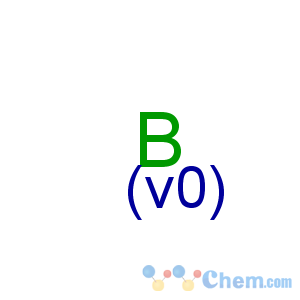Title: Boron
CAS Registry Number: 7440-42-8
Literature References: B; at. no. 5; at. wt 10.811; valence 3. Group IIIA (13). Two naturally-occurring isotopes: 10; 11; three short-lived, artificial isotopes: 8, 12, 13. Occurrence in the earth's crust about 0.001% in the form of its compounds, never as the element. First obtained by Moissan in 1895 by reduction of boric anhydride (B2O3) with magnesium in a thermite-type reaction: Moissan,
Ann. Chim. Phys. [7]
6, 296 (1895), still a good method for large quantities of relatively impure boron. Prepn of high purity crystalline boron by vapor phase reduction of boron trichloride with hydrogen on electrically heated filaments in a flow system: Stern, Lynds,
J. Electrochem. Soc. 105, 676 (1958). Reviews of prepn and properties of boron and its compds:
Boron, Metallo-Boron Compounds and Boranes, R. M. Adams, Ed. (Interscience, New York, 1964) 765 pp;
The Chemistry of Boron and Its Compounds, E. L. Muetterties, Ed. (John Wiley, New York, 1967) 699 pp; Greenwood, "Boron" in
Comprehensive Inorganic Chemistry vol. 1, J. C. Bailar, Jr.
et al., Eds. (Pergamon Press, Oxford, 1973) pp 655-991; J. G. Bower in
Kirk-Othmer Encyclopedia of Chemical Technology vol. 4 (Wiley-Interscience, New York, 3rd ed., 1978) pp 62-66. Review of synthesis and applications of vinylic organoboranes: H. C. Brown, J. B. Campbell,
Aldrichim. Acta 14, 3-11 (1981). Review of toxicology and human exposure:
Toxicological Profile for Boron (PB93-110674, 1992) 110 pp.
Properties: Polymorphic; a-rhombohedral form, clear red crystals, 12 atoms/unit cell, d 2.46; b-rhombohedral form, black, 105 atoms/unit cell, d 2.35; a-tetragonal form, black, opaque crystals with metallic luster, 50 atoms/unit cell, d 2.31; other crystal forms known but not entirely characterized. Amorphous form, black or dark brown powder, d 2.350. Crystals are almost as hard as diamond. mp ~2200°. Vapor pressure at 2413 K (2140°): 1.56 ′ 10-5 atm, Searcy, Myers,
J. Phys. Chem. 61, 957 (1957). Heat capacity at 25° of amorphous form: 2.858 cal/g-atom/°C; of b-rhombohedral form: 2.650 cal/g-atom/°C. Feeble conductor of electricity at room temp, good conductor at high temps. Admixture of traces of carbon improves conductivity. Self-limiting reaction with oxygen due to formation of B2O3 film; oxide coating evaporates above 1000°. Reacts with fluorine at room temp. Insol in water. Unaffected by aq hydrochloric and hydrofluoric acids. When finely divided, it is sol in boiling nitric and sulfuric acids and in most molten metals, such as copper, iron, magnesium, aluminum, calcium. Reacts vigorously with fused sodium peroxide, or with a fusion mixture of sodium carbonate and potassium nitrate.
Melting point: mp ~2200°
Density: d 2.46; d 2.35; d 2.31; d 2.350
Use: In nuclear chemistry as neutron absorber, in Ignitron rectifiers, in alloys, usually to harden other metals.

